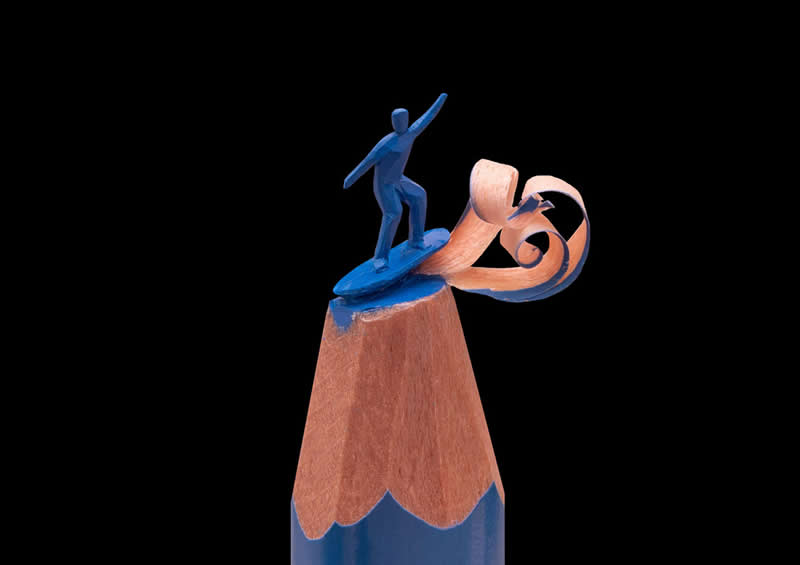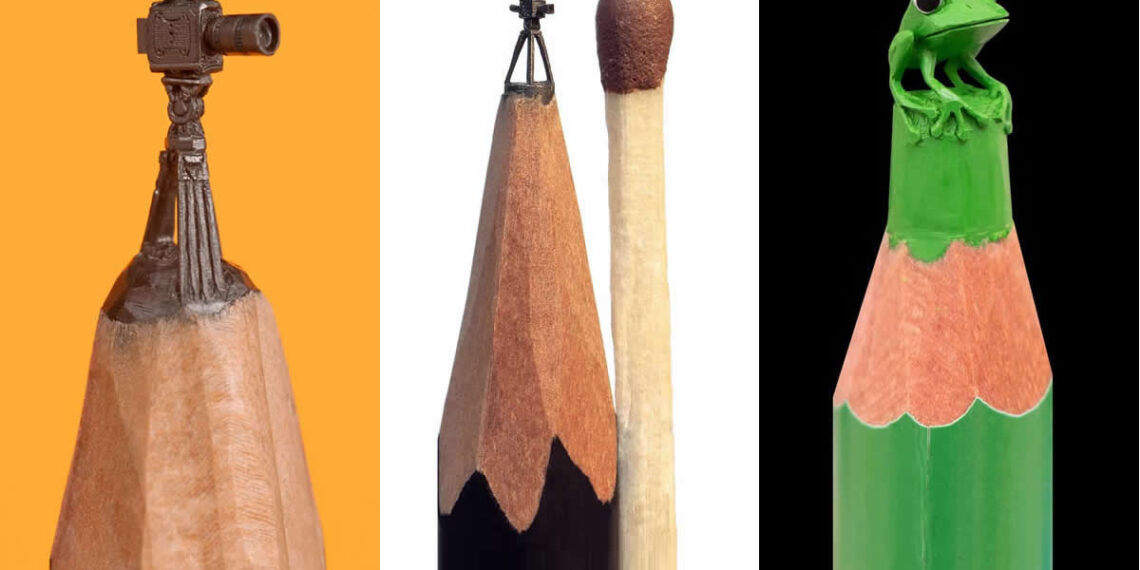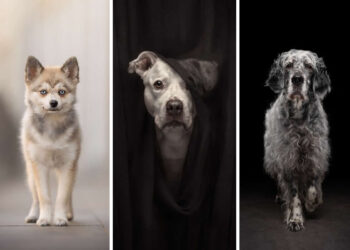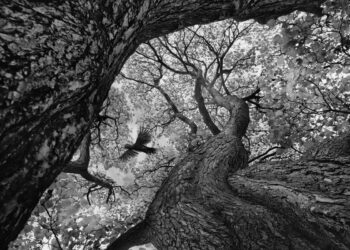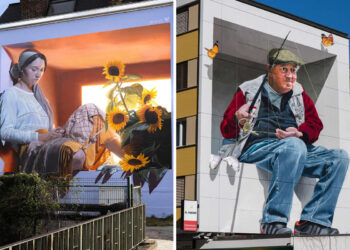When you think of art, you probably picture canvases, paint, or maybe even digital creations — but what if true artistry could fit on the tip of a pencil? That’s exactly what Charlotte-based artist Salavat Fidai has mastered. With nothing more than a scalpel, a magnifying glass, and an incredible amount of patience, he transforms the world’s most ordinary tool into something extraordinary. Fidai doesn’t draw with pencils — he sculpts them.
Each tiny masterpiece is carved directly from graphite, often no bigger than a grain of rice. From beloved pop-culture icons like Yoda and Batman to delicate architectural wonders, animals, and symbols, Fidai’s work captures the magic of miniature art at its most jaw-dropping scale. The level of detail is unreal — a single blink or slip of the blade could destroy hours of work. Yet, that fragile tension is what makes his art so hypnotic.
For Fidai, these sculptures aren’t just feats of precision — they’re a philosophical exploration of creativity itself. “Everyone uses a pencil as a tool,” he says. “But I wanted to make the pencil itself into a rare piece of art.” His passion and process are beautifully chronicled in his books, The Pencilbook and The Pencilbook 2, which showcase hundreds of photographs that capture his artistic journey. Through his micro-sculptures, Fidai reminds us that true creativity knows no size limit — sometimes, it’s the tiniest details that leave the biggest impression.
You can find Salavat Fidai on the Web:
#1
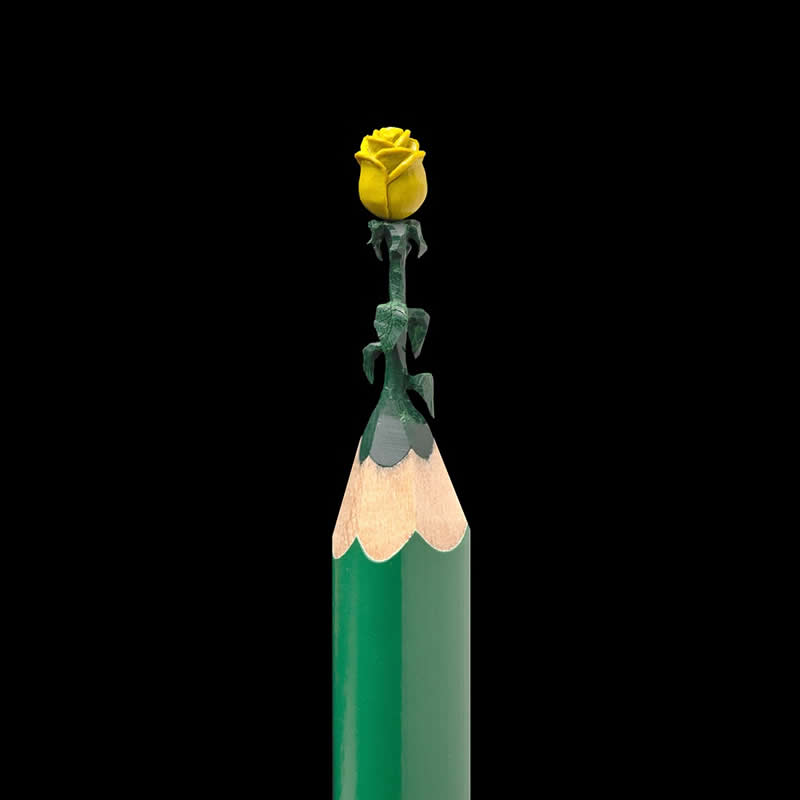
#2
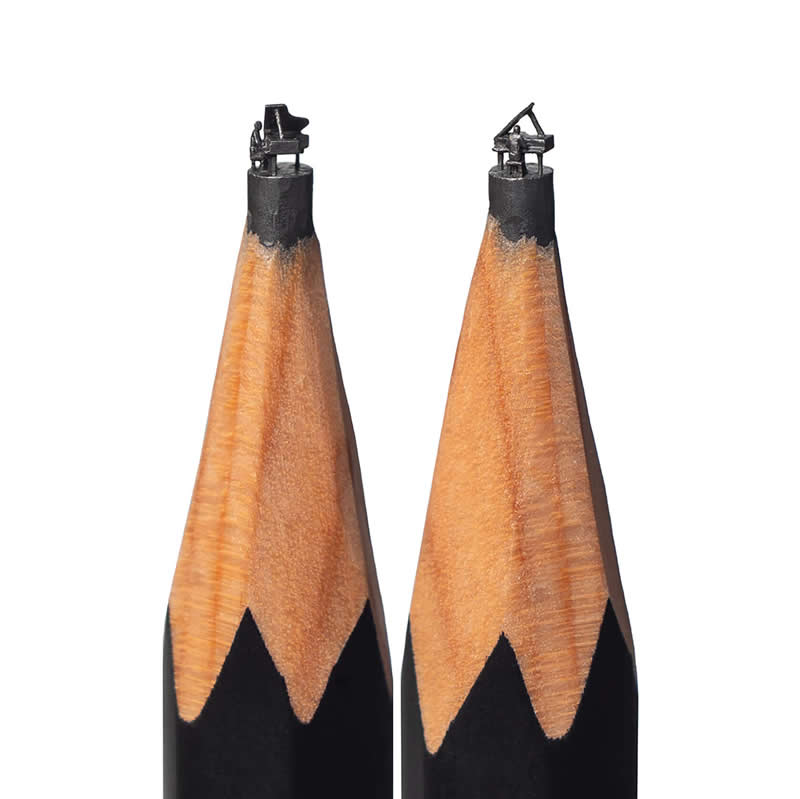
#3
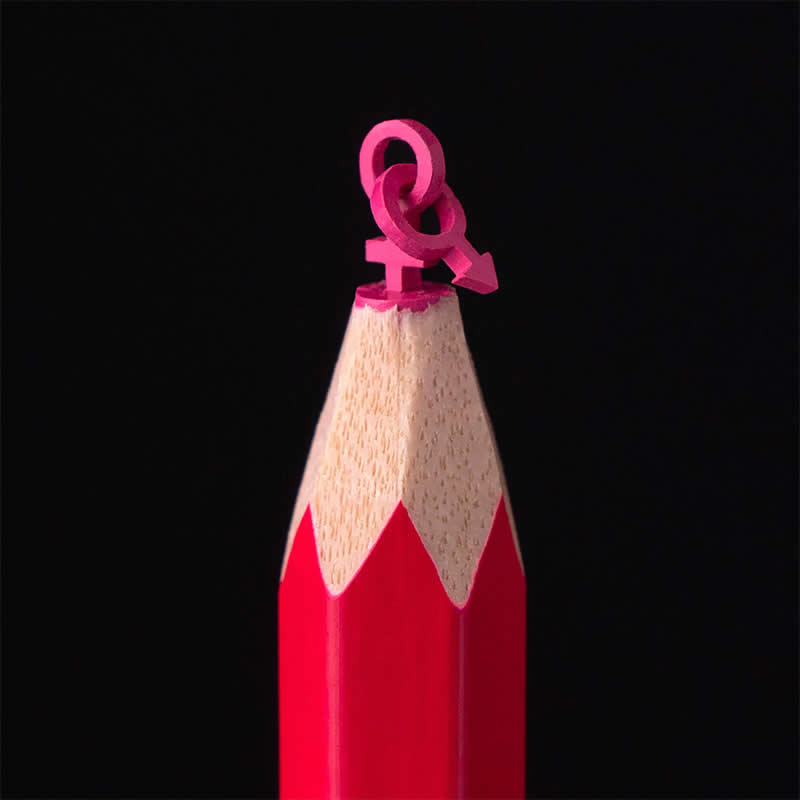
#4
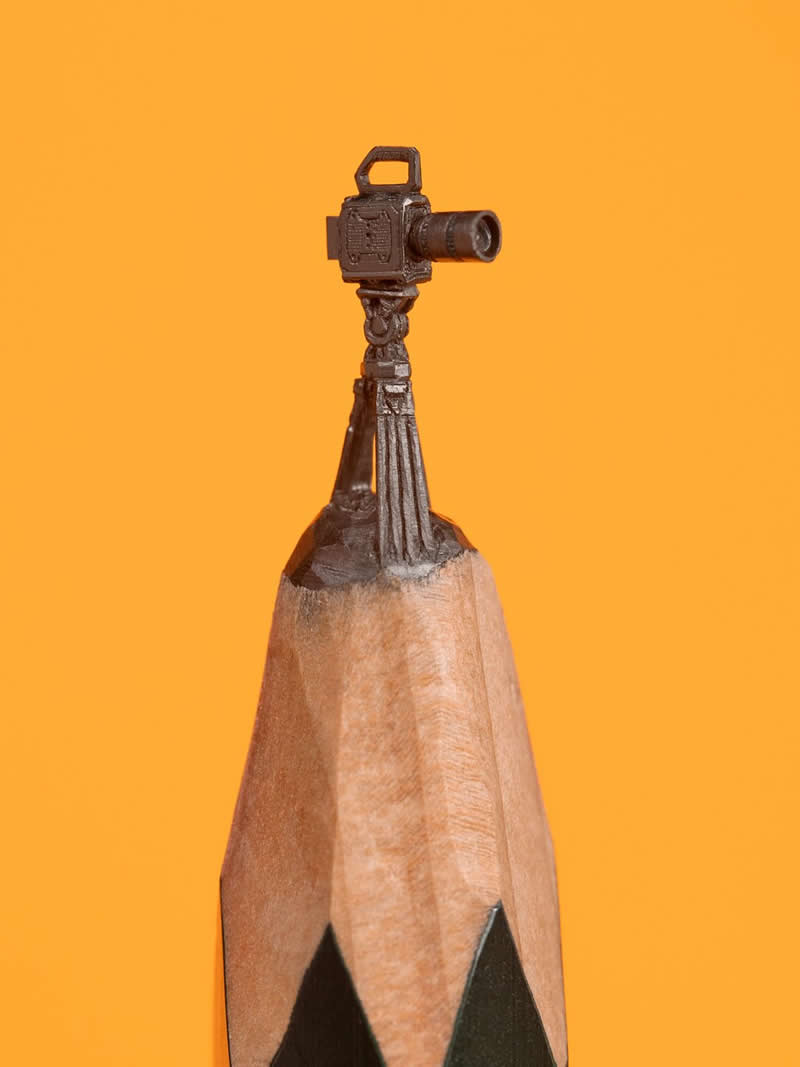
#5
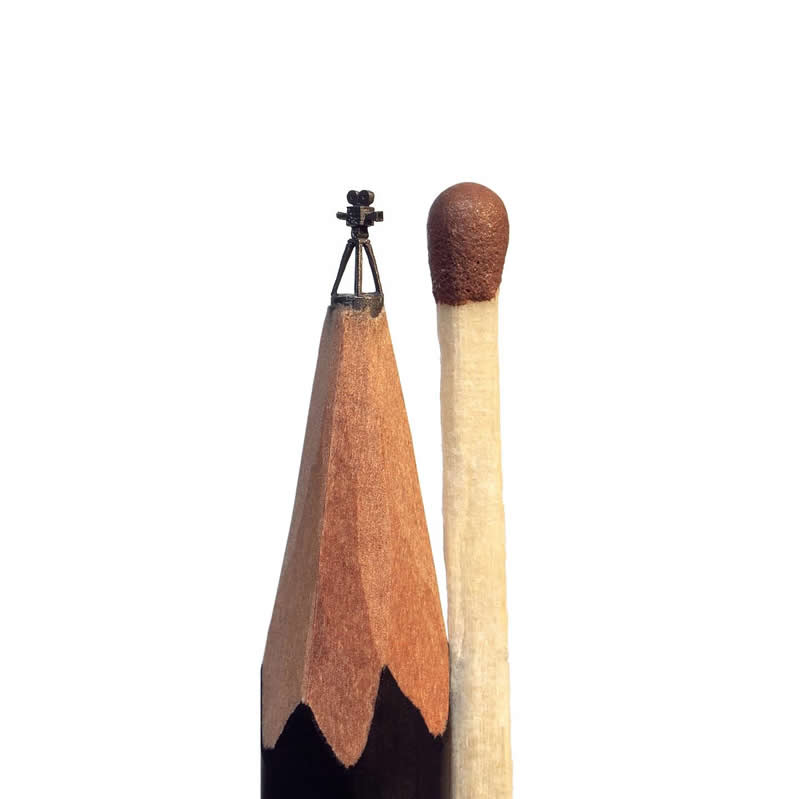
The Art of Turning Graphite into Gold
Salavat Fidai’s process is nothing short of magic. Using a simple scalpel, he chips away at fragile graphite to carve shapes so small you’d need a magnifying glass to truly see them. Each sculpture can take anywhere from several hours to several days, depending on its complexity. The brittle nature of graphite adds a thrilling risk — one false move and the entire piece could crumble.
But instead of seeing that fragility as a setback, Fidai embraces it as part of his art’s beauty. The tension between creation and destruction makes every sculpture feel alive. Whether he’s sculpting a tiny Eiffel Tower or a movie character no taller than a rice grain, Fidai’s focus and precision are unreal. His hands move like a surgeon’s — steady, deliberate, and impossibly controlled — proving that art doesn’t need to be large to be powerful.
#6
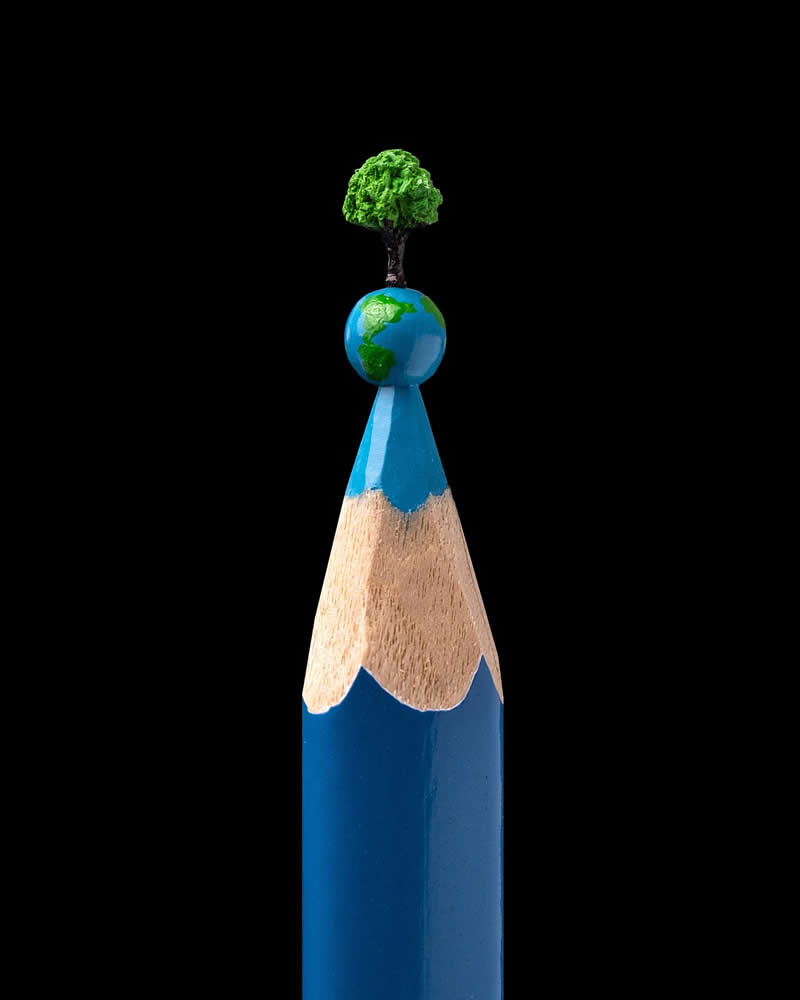
#7
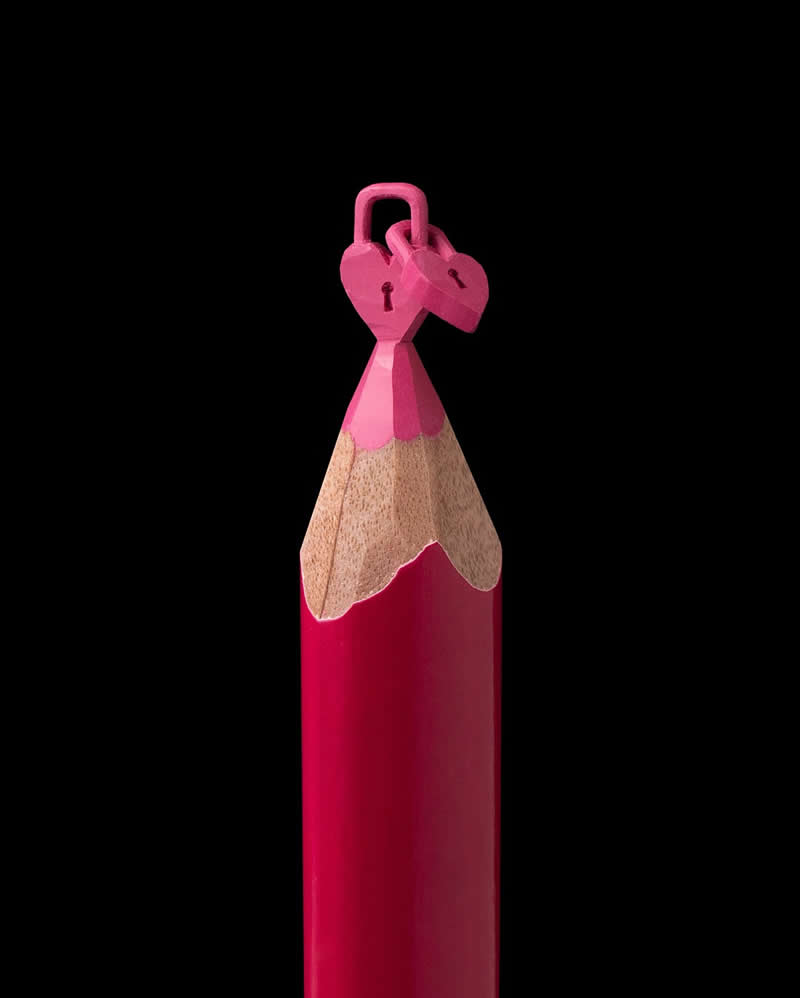
#8
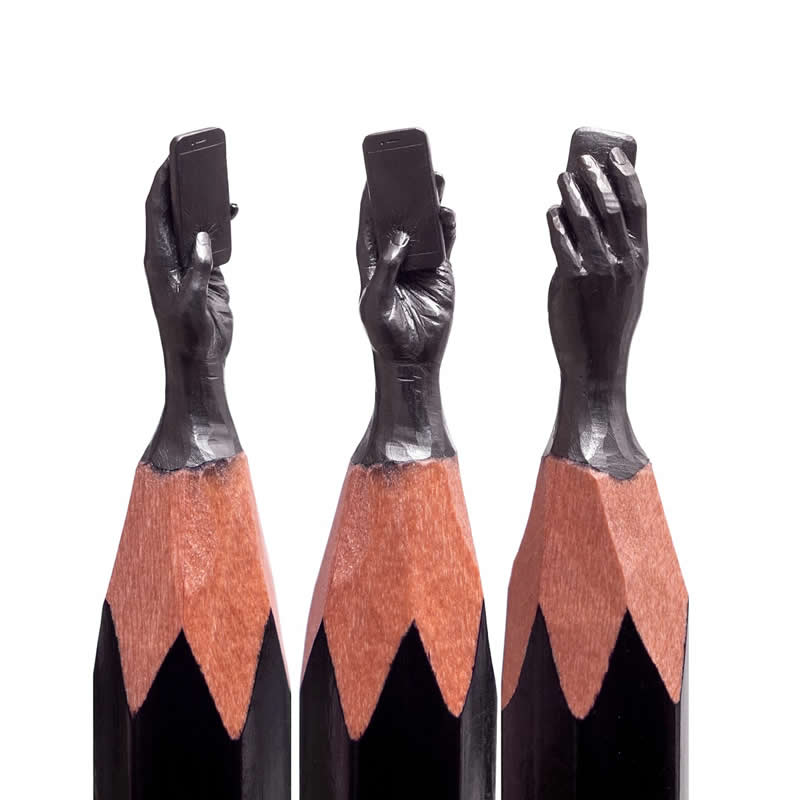
#9
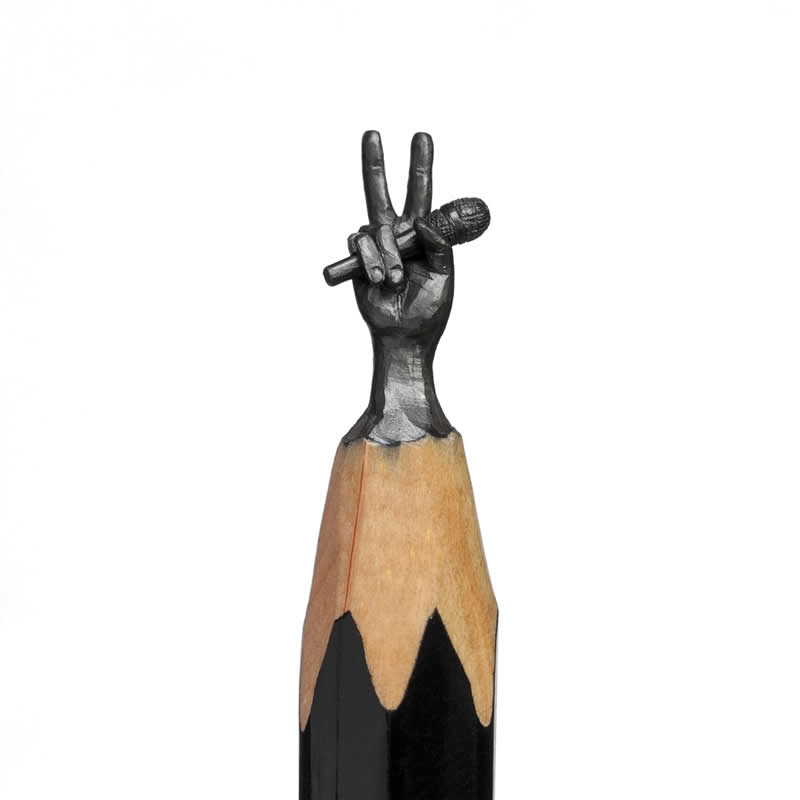
#10
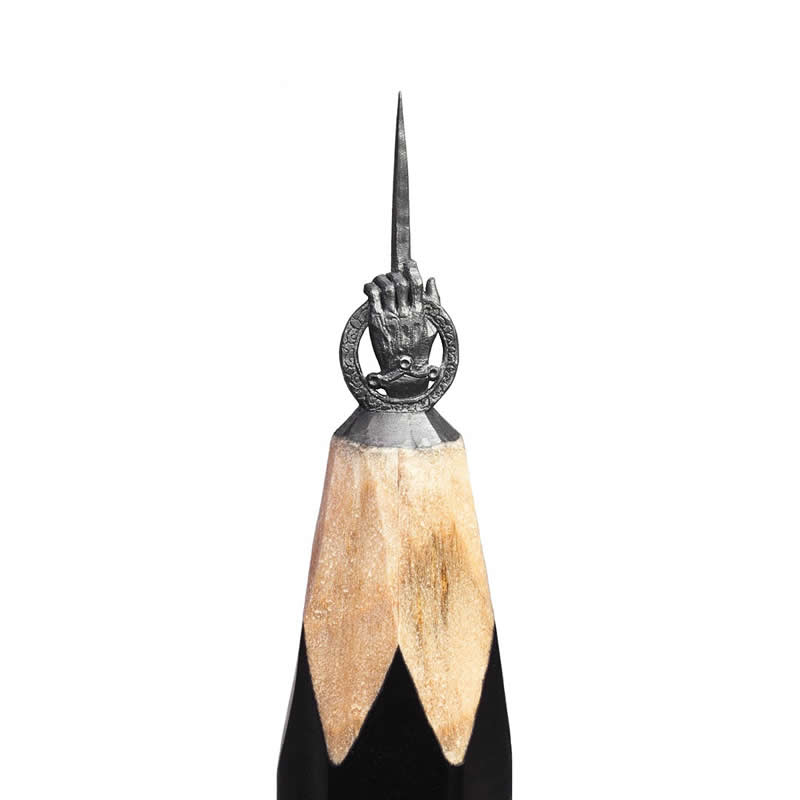
Pop Culture in the Palm of Your Hand
One of the coolest things about Fidai’s work is how he captures pop-culture icons on a microscopic scale. From Star Wars characters to Marvel superheroes, every sculpture feels instantly familiar yet completely reimagined. Imagine seeing Darth Vader’s helmet, Batman’s silhouette, or even Groot from Guardians of the Galaxy, all carved onto the fragile tip of a pencil. It’s a wild mix of nostalgia and technical brilliance.
These tiny heroes and symbols speak to our collective imagination — proof that art doesn’t need a big canvas to make a big statement. Fidai’s graphite sculptures are a reminder that creativity can exist anywhere, even in the tools we take for granted. His pop-culture pieces connect the old-school charm of handcraft with modern storytelling, creating a bridge between childhood wonder and adult appreciation for detail.
#11
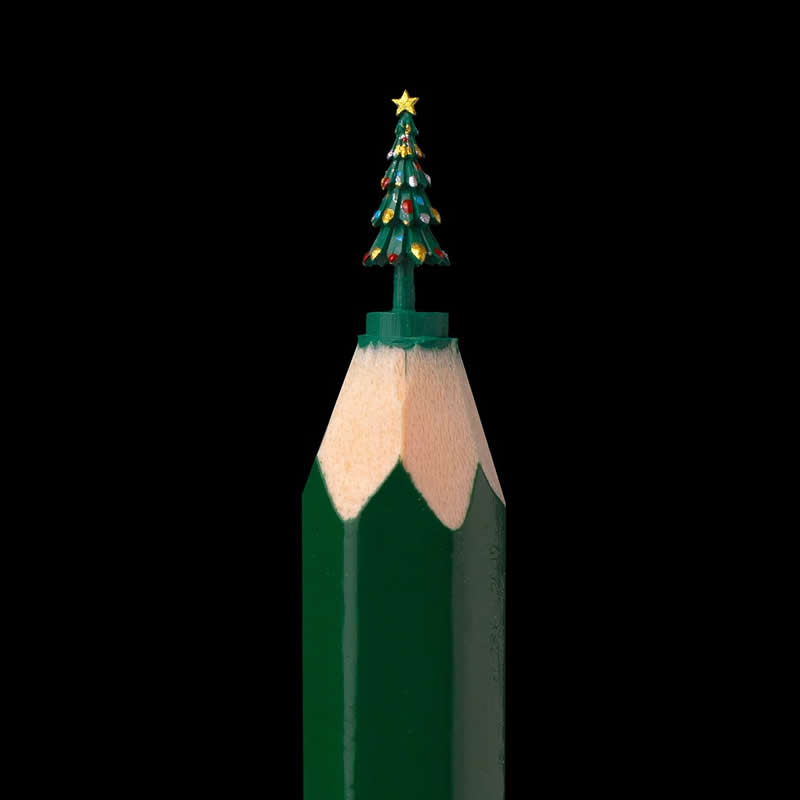
#12
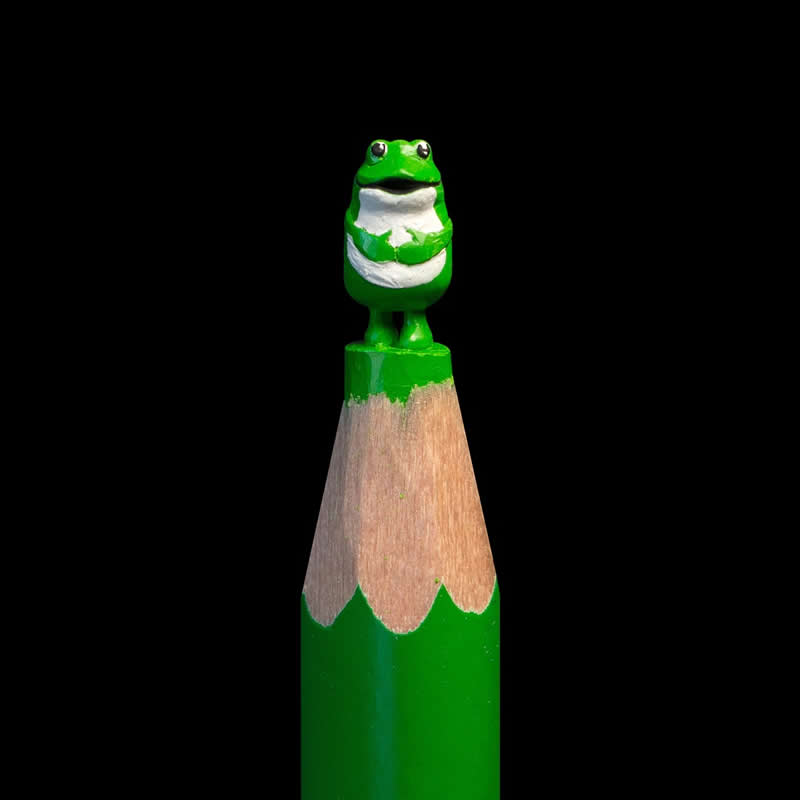
#13
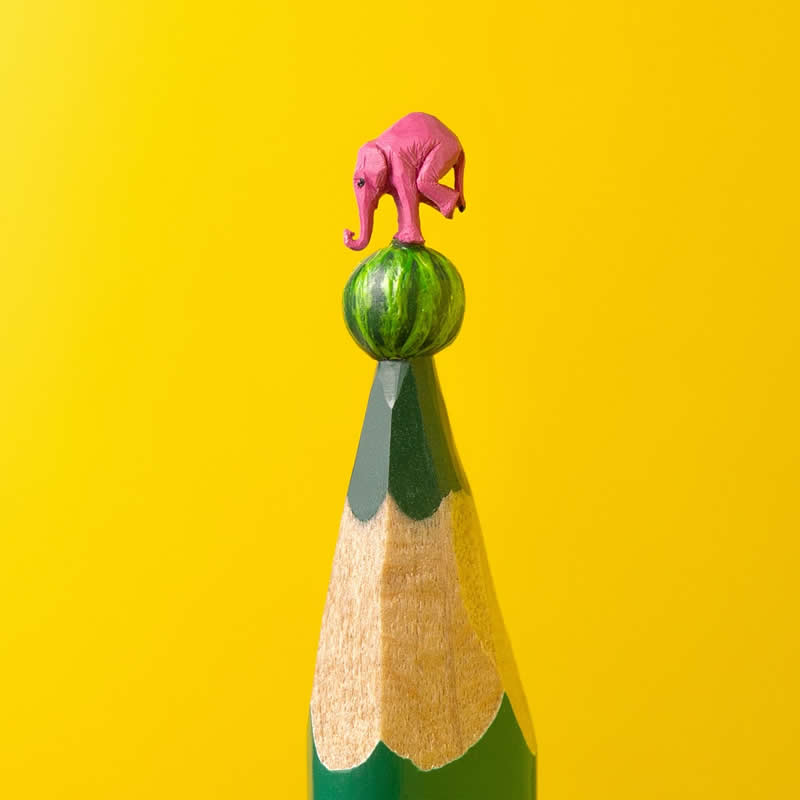
#14
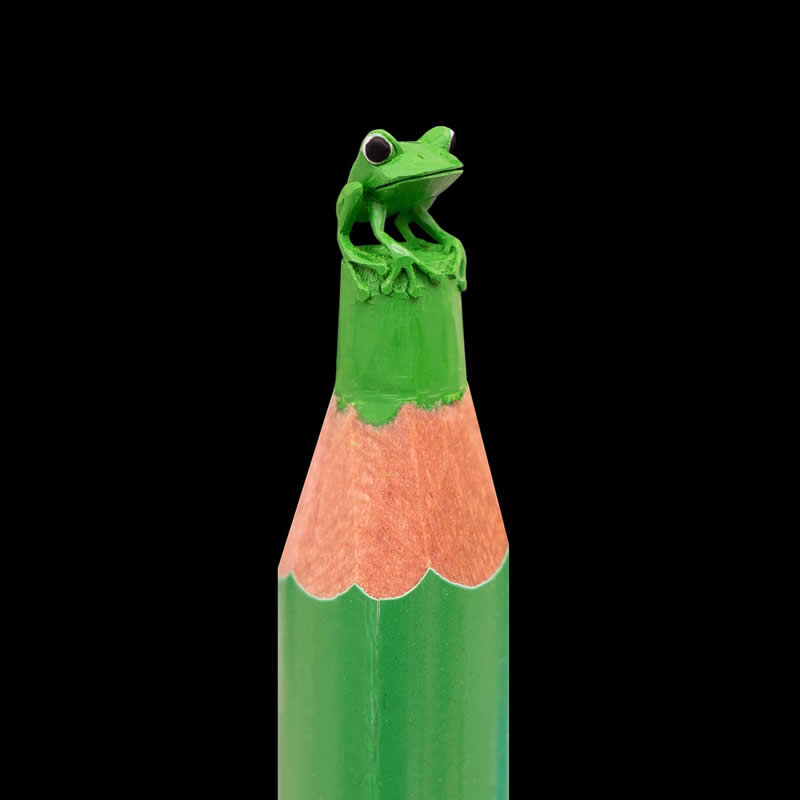
#15
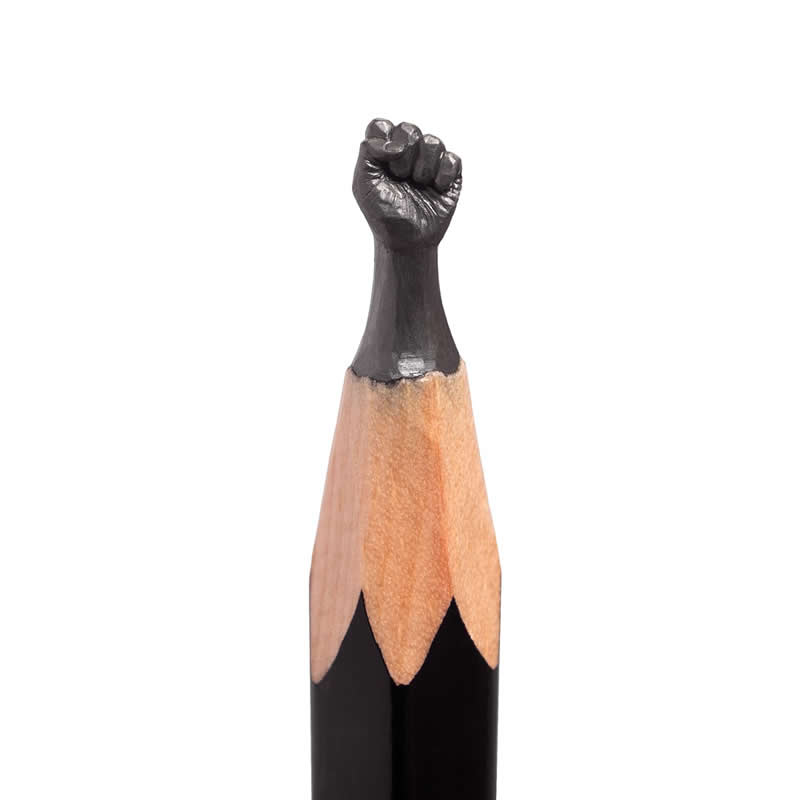
Embracing Fragility: The Zen of Micro-Sculpting
Patience isn’t just a virtue — it’s a requirement in Fidai’s studio. Every time his scalpel touches the pencil, there’s a silent understanding that it could all break apart. Yet, that vulnerability gives his work a quiet Zen-like quality. The artist treats each pencil like a meditation session — slow, rhythmic, and deeply focused. The process is so intense that even a slight vibration on the table could shatter a sculpture mid-progress.
But instead of frustration, Fidai finds peace in the fragility. “It’s about control, precision, and respect for the material,” he often says. This deep connection with the medium turns every finished piece into more than an artwork — it’s a lesson in patience and presence. His creative discipline shows that mastery isn’t about scale; it’s about persistence, control, and love for the craft.
#16

#17
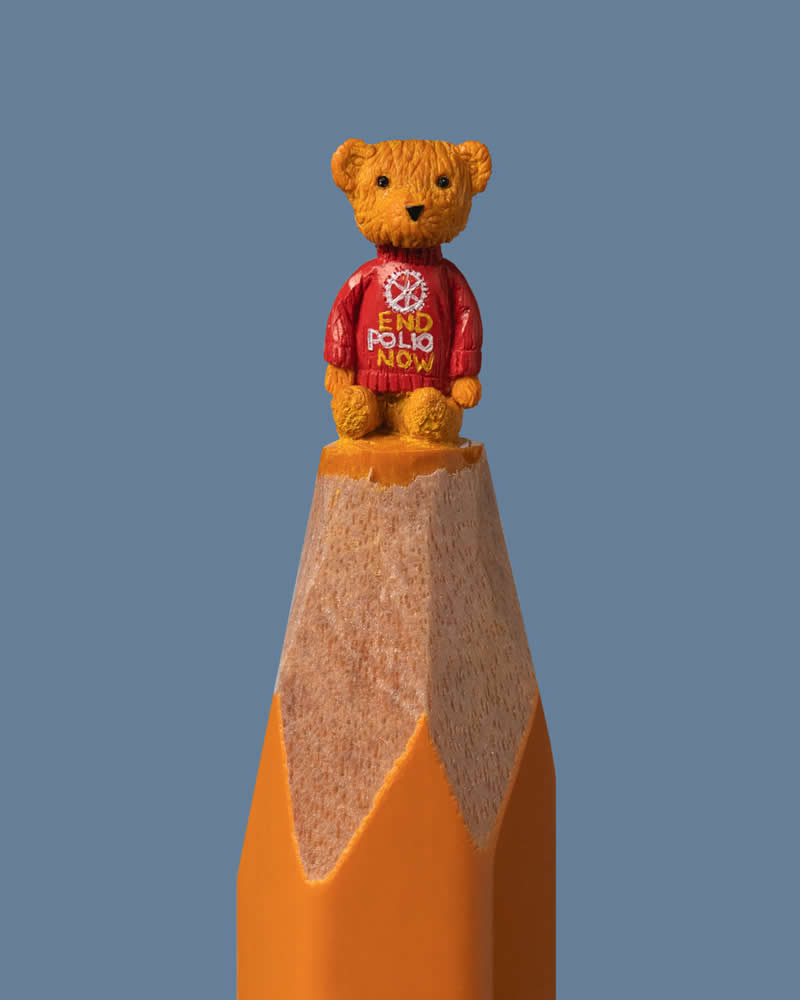
#18
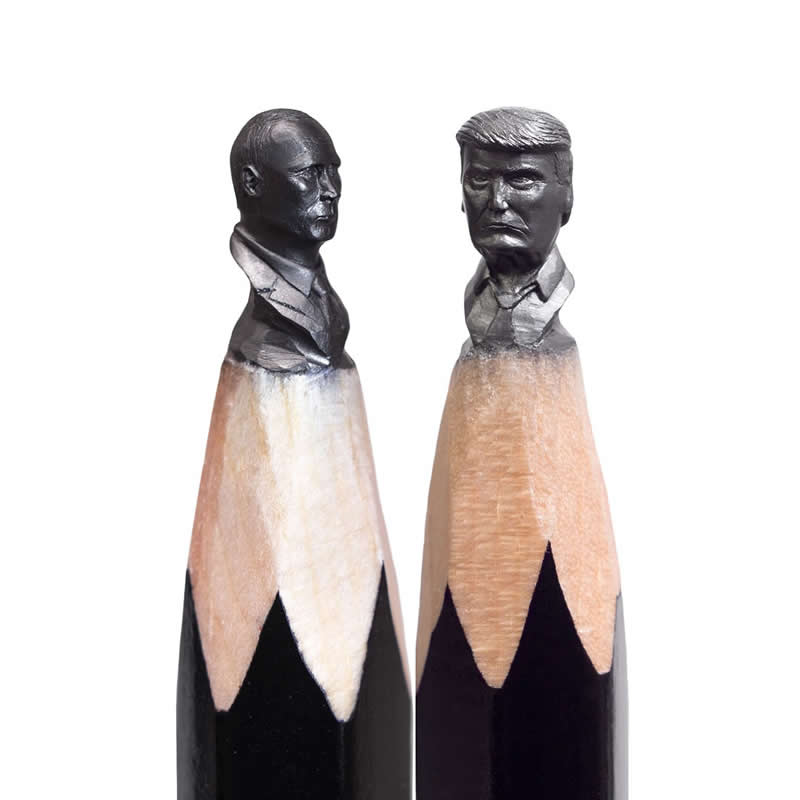
#19
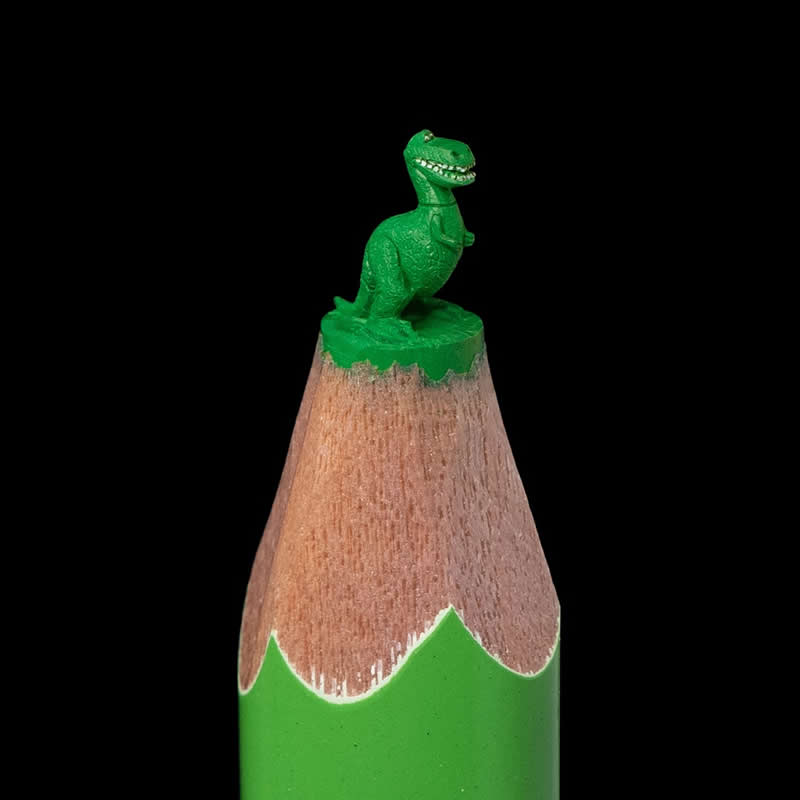
#20
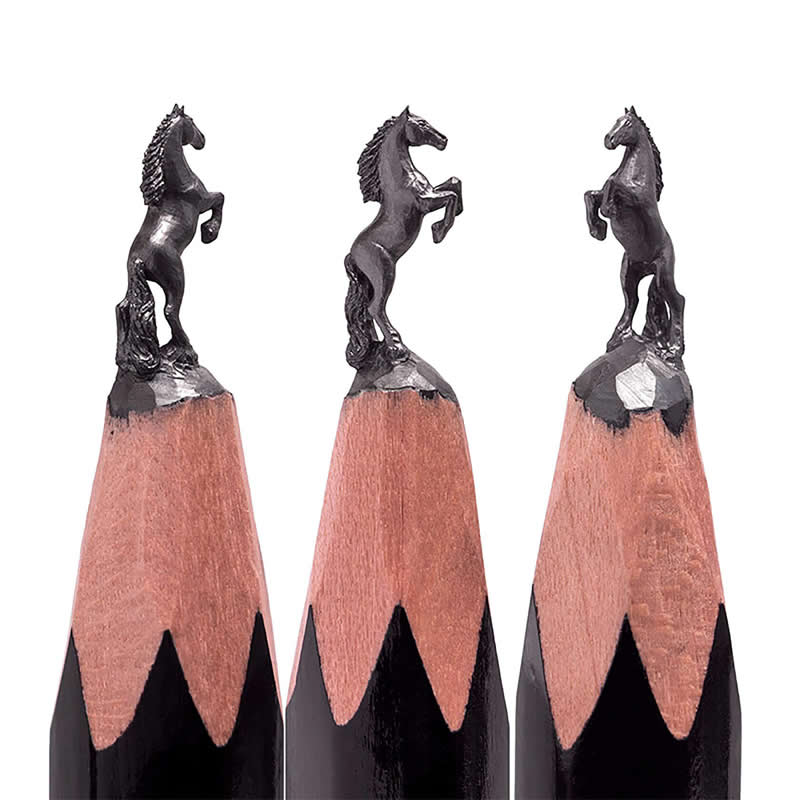
The Beauty of Ordinary Tools Reimagined
There’s something poetic about turning a simple pencil — something we all use and overlook — into a fine art object. Fidai’s sculptures flip the idea of what tools are for. By transforming the pencil itself into the artwork, he challenges how we define creativity. His pieces celebrate simplicity and innovation, showing that greatness can emerge from everyday things.
The textures of graphite, the shine of a clean cut, and the elegance of the pencil’s wooden casing all contribute to a minimalist aesthetic that feels timeless. It’s as if he’s whispering a quiet message through every sculpture: beauty lives in the things we take for granted. Each pencil becomes a symbol of reinvention, a reminder that art doesn’t have to be loud to be extraordinary.
#21
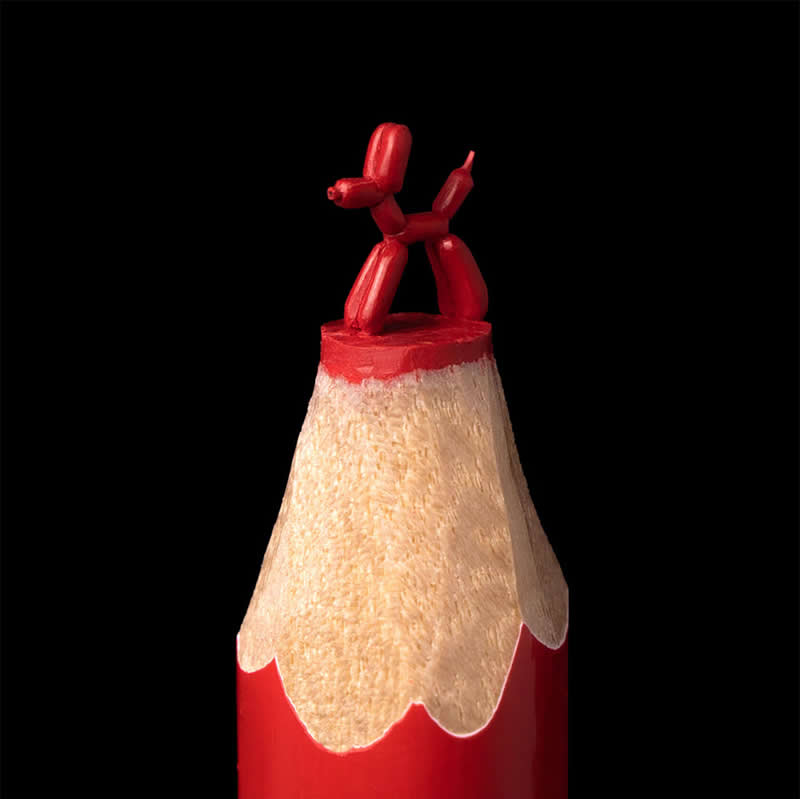
#22
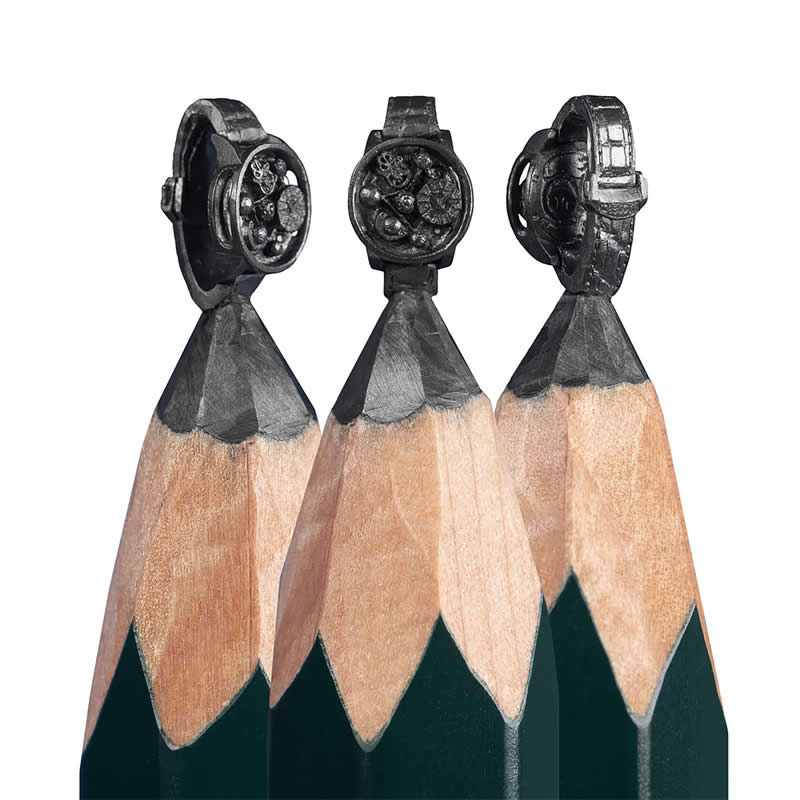
#23
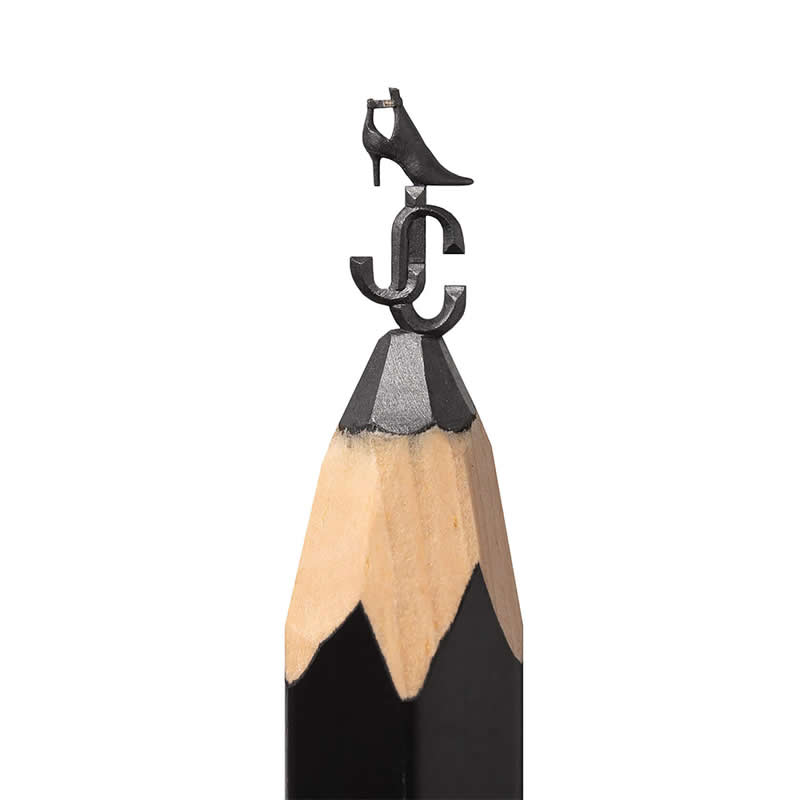
#24
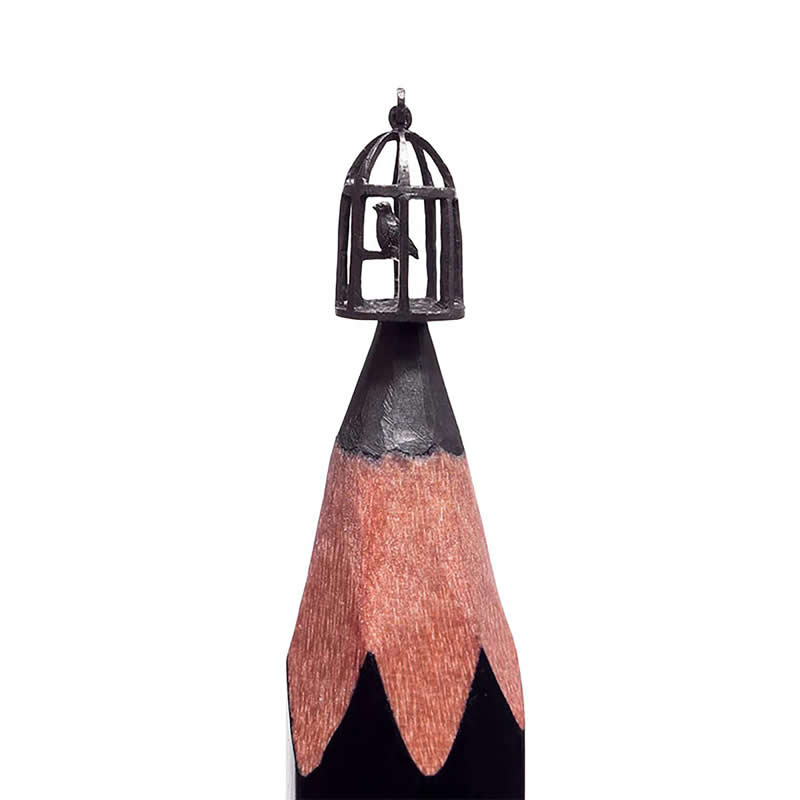
#25
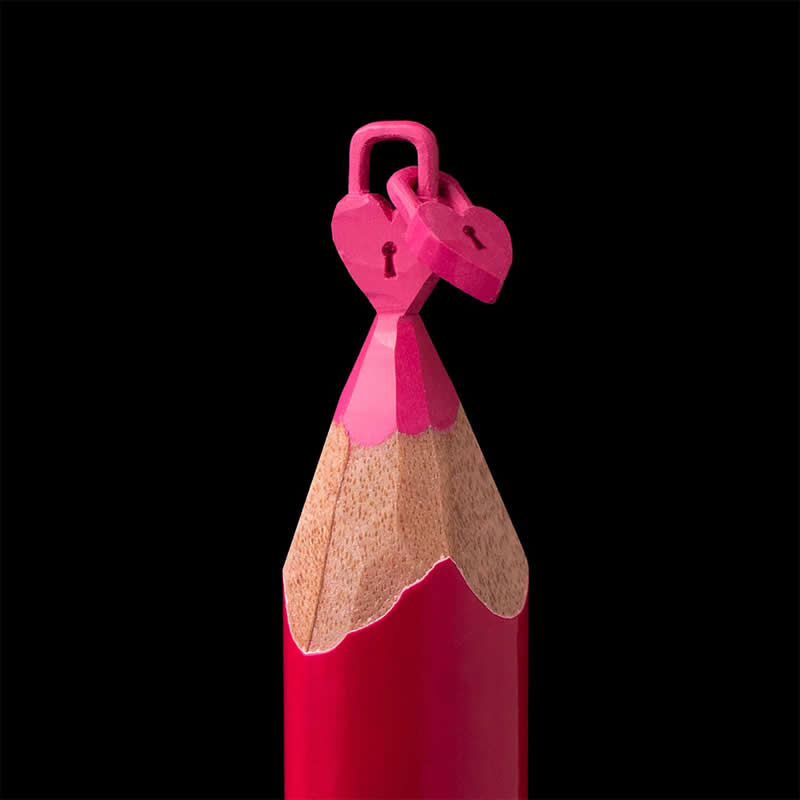
The Pencilbook Legacy: Capturing the Impossible
For those who can’t witness Fidai’s creations firsthand, his published works — The Pencilbook and The Pencilbook 2 — serve as portals into his microscopic universe. These books are more than just collections of photographs; they’re artistic diaries showcasing years of dedication, failure, and triumph. Each image captures the delicate textures and intricate details of his sculptures with stunning clarity.
The books also feature stories about his creative journey — how he found his passion, refined his tools, and learned to turn fragility into fine art. They remind us that even in a world of digital speed, handcrafted beauty still has power. Fidai’s legacy lies not only in his sculptures but in his philosophy: to look closer, think smaller, and appreciate the wonder hiding in everyday life.
#26
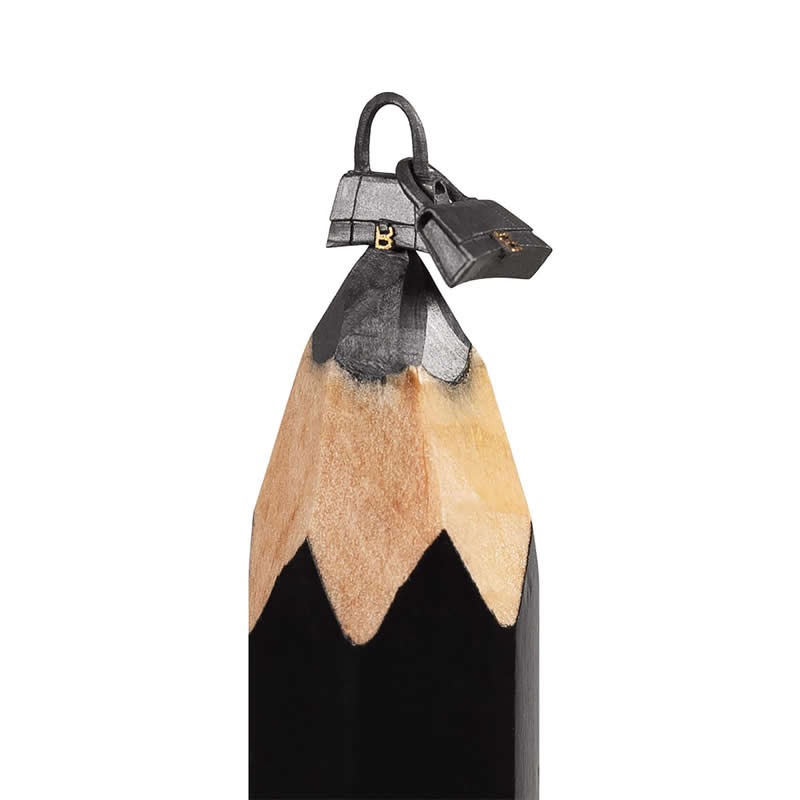
#27
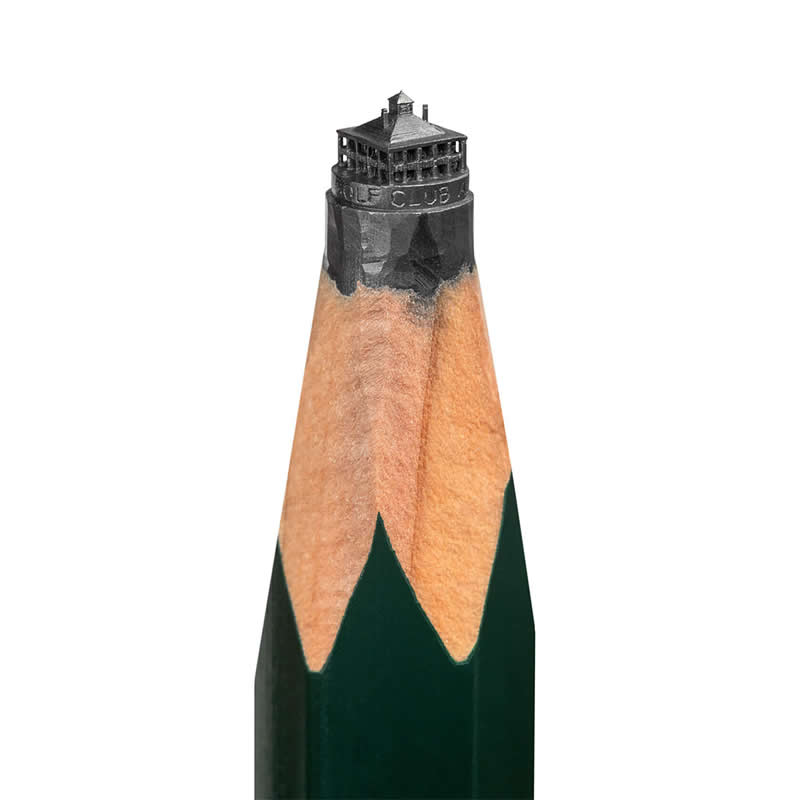
#28
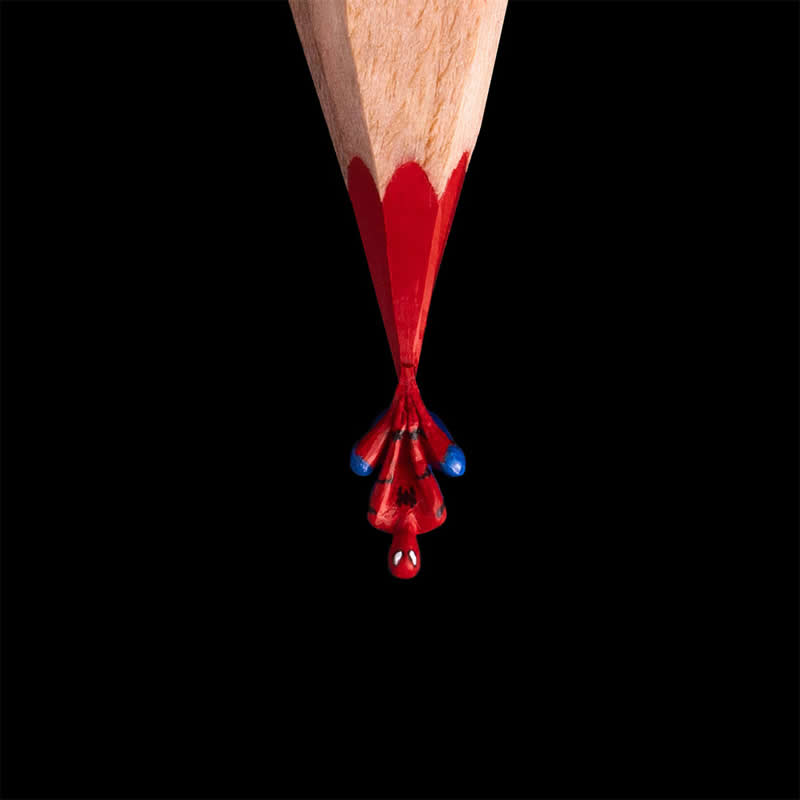
#29
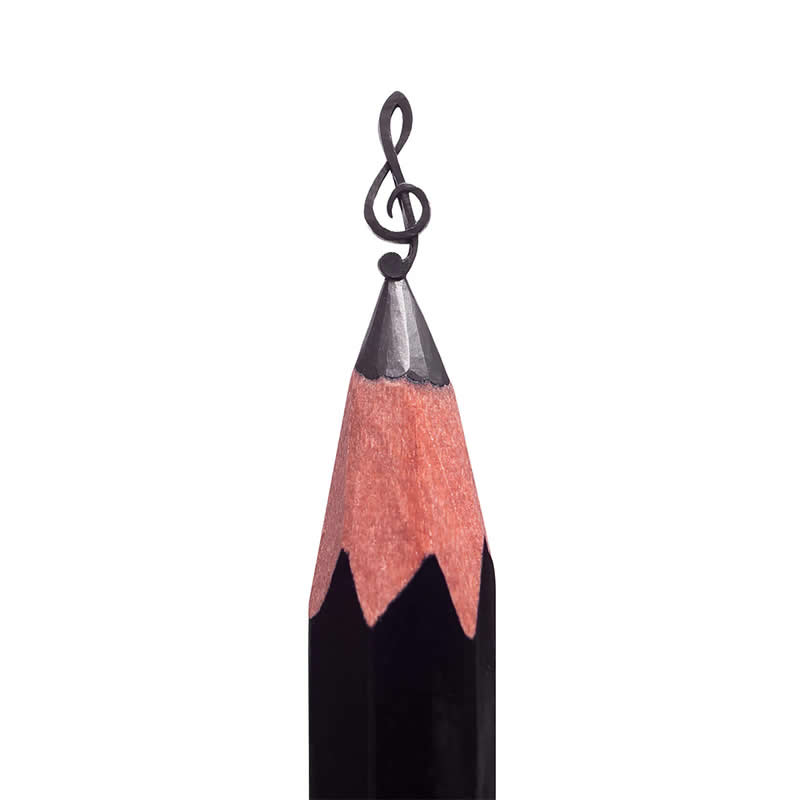
#30
